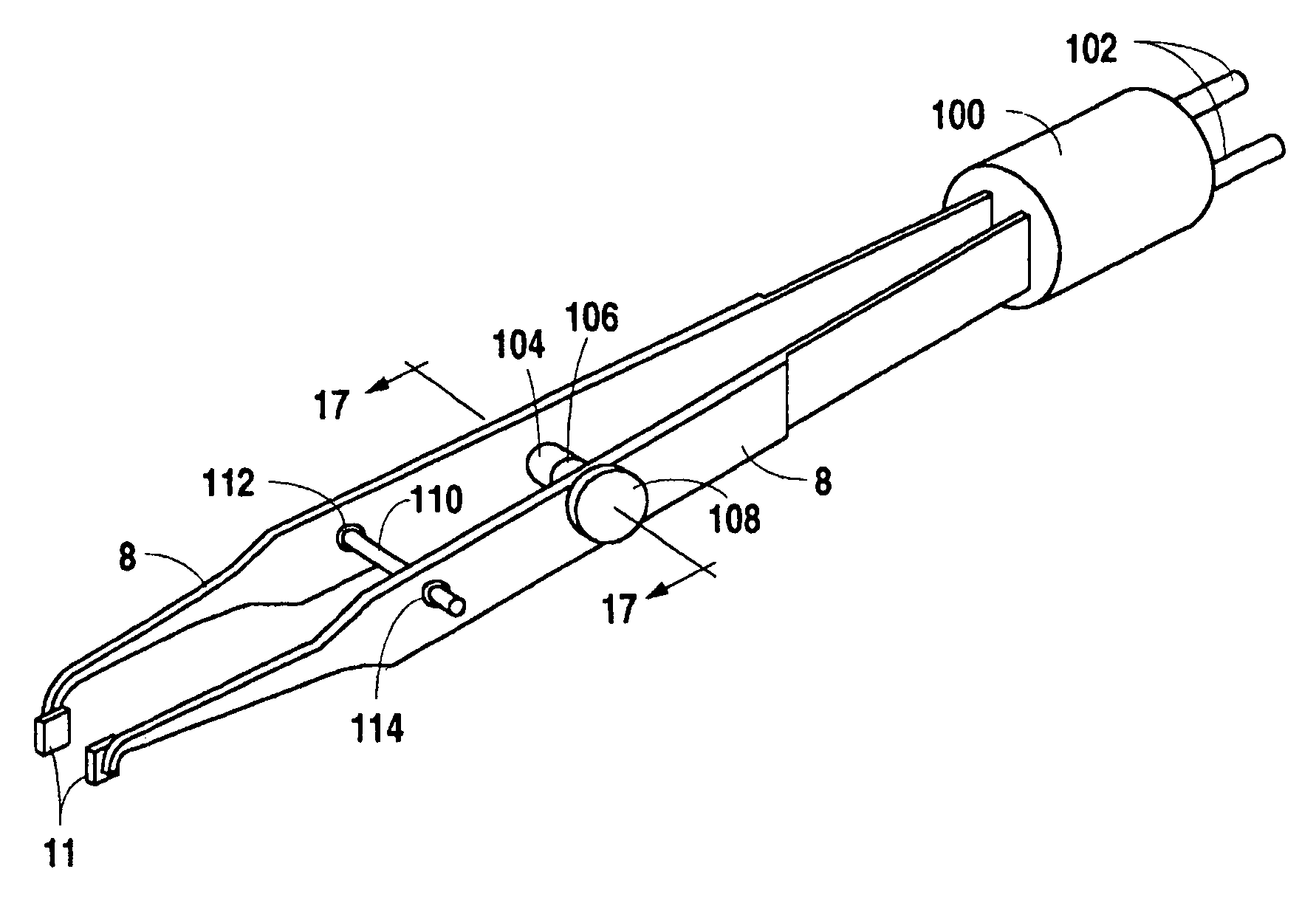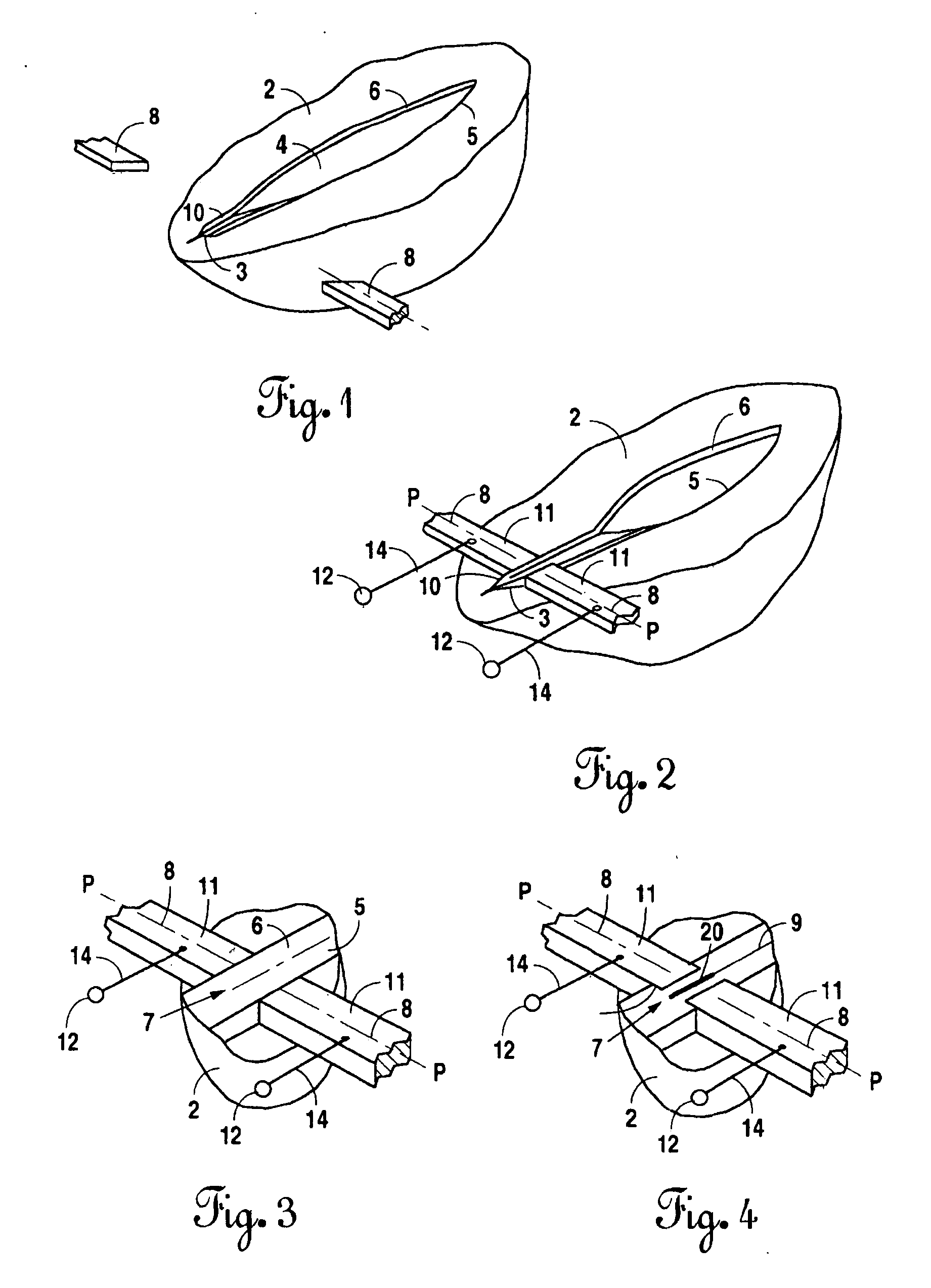Instrument and method for the end-to-end reconnection of intestinal tissues
a tissue reconnection and end-to-end technology, applied in the field of end-to-end reconnection of intestinal tissues, can solve the problems of delayed healing and/or inflammation, allergic reactions, limited applicability, etc., and achieve the effects of convenient use, high thermal conductivity, and easy cleaning and sterilization
- Summary
- Abstract
- Description
- Claims
- Application Information
AI Technical Summary
Benefits of technology
Problems solved by technology
Method used
Image
Examples
fourth embodiment
[0090]FIGS. 10-12 show the invention which is designed to bond the entire periphery of the hollow tissue, such as a blood vessel, discussed above in connection as with FIG. 8. The blood vessel is shown in FIG. 10 after it has been cut into parts 30 and 32. Tissue part 30 is inserted into semicircular electrode sleeve 34 attached to the end of arm 36. Similarly, tissue part 32 is inserted into semicircular electrode sleeve 38 attached to the end of arm 40. The axes of sleeves 34 Fund 38 are aligned along line 42, and tissue ends 30a and 32a face each other. As shown in FIG. 11, another semicircular electrode sleeve 35 is placed onto its mate 34 to encircle tissue part 30 therebetween. Electrode 35 is attached to the end of arm 37. Likewise, semicircular electrode sleeve 39 is placed onto its mate 38 to enclose tissue part 32 therebetween. Electrode 39 is attached to the end of arm 41. These various parts can be part of a tool (not shown), the details of which are apparent to one with...
second embodiment
[0202] The tie rod 804 will move laterally through the instrument to move the movable electrode 821 toward the spring-loaded electrode 818 during the reconnection operation. Moving the electrodes together will clamp the tissue and hold it in place during the bonding process. The movement of the tie rod is controlled by an adjusting means. In one embodiment of the instrument, this adjusting means will be comprised of an adjusting nut 812, a flywheel mechanism 811, and an adjusting screw 833 situated inside and coming in contact with the flywheel mechanism 811. In this embodiment as the flywheel 811 is rotated, the adjusting screw 833 will move laterally as its threads and the threads inside the flywheel move in opposition with one another. Since the adjusting screw 833 is connected to the tie rod 804, the tie rod will move laterally within the instrument as the adjusting screw moves laterally. Once the tie rod adjustment has been made, the adjusting nut 812 can be tightened against t...
PUM
 Login to View More
Login to View More Abstract
Description
Claims
Application Information
 Login to View More
Login to View More - R&D
- Intellectual Property
- Life Sciences
- Materials
- Tech Scout
- Unparalleled Data Quality
- Higher Quality Content
- 60% Fewer Hallucinations
Browse by: Latest US Patents, China's latest patents, Technical Efficacy Thesaurus, Application Domain, Technology Topic, Popular Technical Reports.
© 2025 PatSnap. All rights reserved.Legal|Privacy policy|Modern Slavery Act Transparency Statement|Sitemap|About US| Contact US: help@patsnap.com



